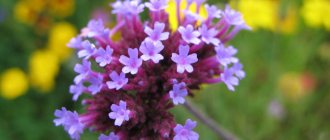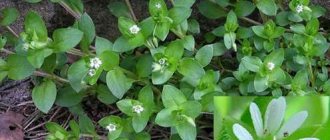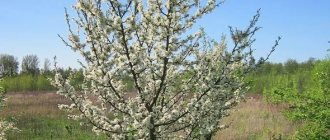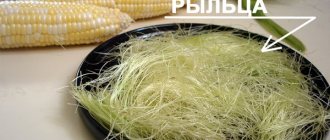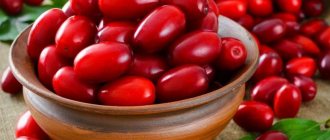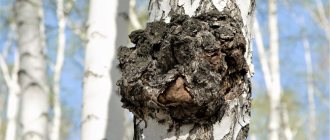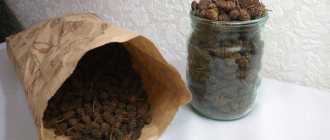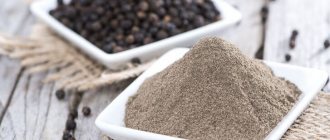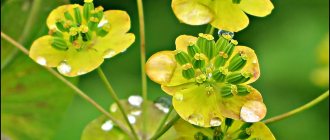Verbena officinalis description
A special subspecies of the plant, verbena officinalis, has beneficial properties; it is used in folk medicine and cosmetology.
This not too whimsical plant grows almost throughout Europe, including the European part of Russia, Australia, both American continents, and also in some regions of Asia (where the climate is temperate). Verbena officinalis is also found in tropical Africa.
The plant looks like this: a long straight thin stem up to half a meter high, small inflorescences, usually white, light blue or soft pink.
The flowering period of verbena is almost all summer, as well as the beginning of September. It is at this time that it is recommended to collect the plant, since during the flowering period the amount of nutrients in verbena is at its highest.
In folk medicine, not only the flowers of this plant, but also all its parts located above the ground are used to prepare tea, decoctions and infusions from verbena. Some recipes (for example, lotions for treating skin diseases) also include verbena root.
List of medicinal properties of verbena
The list of beneficial properties of verbena and its healing qualities is extensive. Preparations containing verbena help eliminate fever, increase sweat production, and remove muscle spasms. The plant also provides other assistance:
- blood purification;
- general strengthening of the immune system;
- improving the functioning of the gastrointestinal tract;
- assistance in the treatment of thrombosis, gout;
- effective cleansing of blood vessels.
After the birth of a child, the extract should be taken to enhance uterine contractions and stimulate the lactation process. The plant also helps eliminate bad breath. Verbena is good for men's health: it normalizes sexual function and activates desire.
Beneficial properties of verbena tea
Verbena officinalis has long been used to treat a huge variety of diseases. Ancient people treated almost all ailments with the flowers of this plant: from skin wounds to loss of strength and vitamin deficiency. So, how exactly can verbena tea help modern people?
- Verbena tea is excellent against colds and viral diseases, influenza and acute respiratory viral infections, helps fight coughs and runny noses, as well as strengthen the immune system and thereby increase the body's resistance to various infections.
- Verbena also helps with serious symptoms: high temperature, fever, severe cough and phlegm - this is facilitated by the antipyretic and expectorant properties of the plant.
- Since ancient times, decoctions of verbena have been prescribed for appetite disorders to stimulate the production of gastric juice. Tea made from the leaves of the plant helps improve the functioning of the digestive system and facilitates the process of digesting food.
- Verbena tea is useful for the prevention and relief of symptoms of gastritis and stomach ulcers.
- Drinking verbena tea has a beneficial effect on the functioning and health of the liver and kidneys, and also helps with urolithiasis, cholecystitis, and kidney stones.
- Residents of Asian countries have been using verbena for several centuries to combat skin inflammation, tumors, purulent ulcers and abscesses. The plant has bactericidal and anti-inflammatory properties, and therefore is often used to disinfect wounds and eliminate inflammation.
- Verbena tea helps cleanse the body of toxins, has a mild diuretic effect and improves kidney function.
- Drinking verbena infusion during menstruation helps reduce pain. Verbena also has a beneficial effect on the health of the female reproductive system. It is often recommended to drink a drink from this plant for anemia.
- Verbena tea is also good for cardiovascular health; it strengthens blood vessels, helps lower cholesterol levels in the blood, thereby significantly reducing the risk of blood clots and varicose veins. Verbena tea is also recommended for unstable blood pressure (however, before use, you should consult your doctor).
- The leaves of verbena officinalis contain an impressive amount of ascorbic acid, thanks to which verbena tea perfectly fights vitamin deficiency and strengthens the immune system. In ancient times, verbena was used to prevent scurvy, and also protected during epidemics of various infections. It was even used to treat rabies (in the early stages).
See also: Hawthorn tea - how to brew and drink
As you can see from the above, verbena does have an impressive number of health benefits. It is not for nothing that this plant has been considered a panacea for all existing ailments for many centuries.
Verbena essential oil - properties and uses
The smell of verbena essential oil helps with dizziness, nausea and other symptoms of vegetative-vascular dystonia, it helps eliminate cerebral vascular spasms and stabilizes blood pressure.
If you use it externally, you can enjoy its regenerating, absorbable, and warming properties for bruises, bruises, and sprains. Verbena oil is used one day after the injury (since ice is applied on the first day for resorption, and after 24 hours heat is applied and warming procedures can be used).
It will help you recover after heavy physical exertion, relieve swelling, muscle spasms and cramps.
Adding oil to cosmetic skin care products helps fight acne, small wrinkles, and facial swelling. It is especially useful for aging skin, it fights sagging and unhealthy color by increasing blood circulation in all layers of the skin.
But mosquitoes, flies and wasps do not like this smell, so the anti-repellent properties of verbena essential oil are obvious.
Plasters are made from the roots to treat mumps, scrofula and ulcers. The root with its astringent property helps fight dysentery.
Possible harm and contraindications
However, we should not forget that any plant or product, even the most useful, has contraindications, and if abused or misused, they can cause serious harm to the body.
First of all, people who are prone to allergies should be careful - for them, using verbena decoctions can end sadly.
Verbena tea should not be given to young children under the age of 12-14 years, as they are also at high risk of an allergic reaction.
Women during pregnancy and lactation should avoid using the plant.
Due to its properties, verbena can affect blood pressure, so people with hypertension and heart disease should use verbena teas and infusions with caution.
Attention!
Even in the absence of allergies or heart problems, you should not self-medicate - it is best to consult your doctor before using verbena.
Composition and properties of verbena
Glycosides
Properties of glycosides:
- diuretic;
- vasodilator;
- antimicrobial;
- disinfectant;
- expectorant;
- sedative.
Verbenamine
Properties of verbenamine:
- astringent;
- diaphoretic;
- anti-inflammatory;
- antiseptic;
- wound healing;
- antispasmodic;
- scattering;
- absorbable;
- expectorant;
- choleretic;
- antiallergic;
- antipyretic.
This component contributes to:
- increased appetite;
- normalization of metabolism;
- improving the digestion process.
Carotene
When broken down in the human body, carotene forms vitamin A, which is necessary for the normal functioning of the immune system.
In addition, vitamin A has the following properties:
- participates in oxidative and reduction processes;
- regulates protein synthesis;
- normalizes metabolism;
- participates in the formation of both bones and teeth;
- slows down the aging process.
Tannin
This is a tannin, which, by changing cell proteins, forms a protective film, exerting both bactericidal and bacteriostatic effects on microorganisms. Medicines that contain tannins have an astringent effect, which is why they are used for rinsing the mouth, for burns (powder), for gastrointestinal disorders, for poisoning with heavy metals and poisons of plant origin. More about tannin
Essential oil
Essential oil properties:
- bactericidal;
- antiseptic;
- anti-inflammatory;
- stimulating;
- sedative.
Bitterness
It has a sap-like effect, so taking verbena preparations is indicated to increase appetite and normalize digestion, in the treatment of exhaustion, loss of strength and neurasthenia.
The bitterness contained in verbena has an anabolic, restorative, and also restorative effect.
Silicic acid
Properties of silicic acid:
- wound healing;
- antiseptic;
- adsorbent (removes toxins from the body unchanged);
- regenerating (restores damaged areas of the mucous membrane).
Slime
Properties of mucus:
- enveloping;
- expectorant;
- anti-inflammatory.
In addition, mucus enhances the effect of the raw materials included in the medicinal product, so verbena officinalis is often used in combination with other plants.
Steroids (sitosterol)
Sitosterol is an antagonist (a substance that has the opposite effect) of cholesterol, protecting blood vessels from the formation of deposits and plaques. Also, taking this substance reduces the risk of prostate enlargement.
Flavonoids
These substances contained in verbena inhibit enzymes that destroy hyaluronic acid, which is responsible for the formation of cartilage tissue and strengthening the walls of blood vessels. Thus, flavonoids not only strengthen capillaries, but also improve their elasticity, thereby preventing their sclerotic damage.
Flavonoids neutralize free radicals formed due to ionizing radiation, as well as some toxic substances.
Vitamin C
Ascorbic acid is a powerful antioxidant that removes oxidized products that damage healthy cells.
In addition, vitamin C has the following properties:
- antitoxic (neutralizes harmful substances by binding and removing them from the body);
- restorative (promotes the restoration of liver cells and normalization of the functioning of the pancreas);
- wound healing;
- anti-carcinogenic (neutralizes harmful compounds that cause the formation of malignant tumors of the gastrointestinal tract).
Recipes for using verbena
Verbena is a plant that can relieve the symptoms of a wide variety of diseases, so it is not surprising that there are a huge number of recipes using verbena. Below are the most popular and easy to prepare recipes.
Verbena tea
Verbena tea is used to treat and relieve symptoms of colds, influenza or acute respiratory viral infections, and will help fight severe coughs and fevers. It is recommended to drink verbena tea during painful menstruation, as well as pain in the liver or urolithiasis (only after consultation with a specialist). As a pleasant bonus, verbena tea will help cope with insomnia and improve sleep patterns, calm nerves and relieve nervous agitation.
- Dried or freshly picked flowers of the plant are used to make tea.
- For 1 cup you should take 1.5 tbsp. l. verbena.
- Next you need to pour boiling water over the flowers.
- Leave to infuse for 10-15 minutes.
- Drink no more than twice a day, without adding sugar, milk or cream.
See also: Yellow Egyptian Helba tea - beneficial properties, how to brew
It is recommended to drink verbena tea before bed or in the afternoon.
Healing decoction
This recipe is recommended for people suffering from problems with the liver or spleen, as well as problems with blood vessels. It will be useful to drink verbena decoction if you have high cholesterol to dissolve cholesterol plaques and prevent thrombosis.
The flowers of the plant are also used to make a healing decoction (it is advisable to take freshly picked ones). The next sequence of actions is as follows:
- 2 tsp. pre-crushed verbena leaves are filled with filtered water (it should be no more than 500 ml).
- The mixture must be placed on low heat and wait until it boils.
- Remove from the stove and leave to cool in a cool place.
The next day, the verbena decoction can be eaten. You should drink no more than 200 ml per day, and it is better to divide them into several doses and drink before meals.
Verbena infusion
The infusion will be useful for general strengthening of the body, in the treatment of colds, as well as in the fight against nervous exhaustion and disturbed sleep patterns. The drink is quite simple to prepare: verbena leaves should be steamed with boiling water and left to infuse for several hours (at least two).
Raw materials required: 2 tbsp. l. for one glass.
The daily intake should not exceed 250 ml. It is not recommended to drink this amount at one time; should be divided into several servings and consumed before bedtime.
Verbena tea: benefits and harms, recipes
Verbena is familiar to everyone; Thanks to its beauty and unpretentiousness, it grows everywhere. This is a perennial plant, it blooms variegatedly from year to year throughout the summer.
They like to use the plant in landscape design, as it is undemanding to environmental conditions, and has more than 200 species.
Its color range is very diverse, for which the plant is popular among gardeners.
The Verbena officinalis variety finds its use not only as an ingredient in traditional medicine recipes, but also as a component of some traditional medicines. In this article we will tell you how to brew verbena tea correctly.
Description of the plant
The verbena plant is a perennial shrub up to 100 centimeters high. The leaves are small and oblong in shape with jagged edges. Small flowers grow in clusters, their colors and shades are numerous - from delicate and pale yellow and blue to bright red, pink and purple.
The plant's homeland is America, and nowadays it can also be found in Europe, Asia and Russia. Flowering period is all summer. Verbena herb - stems, leaves and flowers - are harvested in summer, and roots - in spring and autumn.
Also popular in folk medicine is lemon verbena, a plant variety from which essential oil is made.
Beneficial features
Now let's talk about the benefits and harms of verbena.
This plant owes its beneficial properties to its composition, which includes:
- vitamin C;
- iridoid glycosides;
- flavonoids;
- tannins;
- steroids;
- carotene;
- alkaloids;
- verbaline;
- coumarin.
Due to its composition, verbena has the following properties:
- diuretic;
- sedative.
- antimicrobial;
- expectorant;
- vasodilator;
- disinfectant;
Application:
- It can be used as a tonic.
- In folk medicine it is used for colds.
- The plant helps thin the blood.
- Verbena infusions are used for intestinal colic or headaches.
- It improves appetite and is used for gastritis and cholecystitis.
- Helps with neurodermatitis, cholelithiasis, and hepatitis.
- Calms the nervous system and is used for depression, stress, hysteria, insomnia, chronic fatigue and even epilepsy.
- Helps with female ailments: cystitis or irregular menstrual cycle. Relieves the symptoms of premenstrual syndrome and menopause.
- Relieves inflammation of the gums, eliminates bad breath.
Contraindications
In addition to the beneficial effects, the use of this plant can also cause harm to the body. Contraindications to the use of verbena are as follows:
- hypertension;
- individual intolerance;
- pregnancy;
- age up to 14 years.
Additionally, if you take vervain over a long period of time, it will harm the lining of your intestines.
How to brew verbena correctly
Now let's look at how to properly brew tea with verbena and a medicinal decoction from this plant.
Classic recipe
You will need 20 grams of crushed verbena flowers. They should be filled with 100 milliliters of boiling water. Infuse the drink for 5-10 minutes. Then strain and drink, preferably in one go. You shouldn't add sugar, but you can add a spoonful of honey.
Infusion recipe
Take 10 grams of the plant and pour 300 milliliters of boiling water. Heat this mixture for half an hour. For this, it is advisable to use a water bath, but you can simply heat it slowly over a fire. Then you need to cool and strain the infusion.
Take three times a day, drinking no more than half a glass at a time.
Soothing infusion recipe
You will need 20 grams of the plant and 200 milliliters of boiling water. Leave for half an hour or forty minutes, then strain.
Drink one glass of infusion in the morning and evening.
Decoction recipe
You will need 10 grams of the plant per 1 liter of boiling water.
Pour the contents into a saucepan and slowly bring to a boil. Then cool, pass through a strainer and dilute with boiled water to restore the original volume of liquid.
Drink 300 milliliters per day, dividing the intake into 4 times.
Decoction recipe for increased anxiety
Take two teaspoons of verbena, three teaspoons of St. John's wort, one teaspoon of lemon balm or mint, add crushed valerian root and pour boiling water. There should be one teaspoon of herbal mixture per glass of boiling water.
Infuse the broth for an hour in a thermos or tightly closed container, then strain.
Drink a third of a glass three times a day before meals.
Decoction recipe for intestinal disorders
You will need two teaspoons of verbena, two teaspoons of medicinal chamomile flowers, two teaspoons of St. John's wort herb, one teaspoon of sage.
Pour boiling water: there should be a glass of boiling water for one teaspoon of herbal mixture. Leave for an hour, then strain thoroughly.
It is advisable to drink this decoction in the morning and evening. The recommended dosage is a third of a glass.
Source: https://Teaxy.ru/travyanoy-chay/chay-s-verbenoy/
Benefits of verbena
Taking verbena helps reduce temperature during fever, increases the secretion of bile and sweat. Possessing antibacterial properties, this plant relieves muscle spasms.
It has been noted that the use of verbena greatly accelerates the healing process of skin lesions, so the plant is widely used externally as a lotion to eliminate the following diseases:
- ulcers;
- rashes of various etiologies;
- eczema;
- furunculosis;
- scabies;
- psoriasis;
- neurodermatitis;
- acne.
Verbena decoction relieves inflammation of the gums and eliminates bad breath.
Verbena is used in the treatment of mental and neurological conditions, including:
- strong emotional experiences;
- stress;
- nervous disorders;
- excessive stress;
- insomnia;
- hysteria;
- depression;
- epilepsy;
- chronic fatigue;
- prostration.
This medicinal plant helps eliminate many women's ailments, namely:
- disruption of the genitourinary system;
- manifestations of premenstrual syndrome;
- manifestations of menopause;
- itching in the vagina;
- menstrual irregularities.
But not only women are recommended to take verbena. Thus, this plant is recommended for men as a means of normalizing sexual function.
Verbena for clean vessels
One of the most pronounced beneficial properties of medicinal verbena is anti-atherosclerotic. Verbena perfectly cleanses blood vessels from formed cholesterol plaques that have a low density, which significantly improves blood circulation, reducing the risk of developing such diseases:
- thrombophlebitis;
- thrombosis;
- rheumatism;
- gout;
- atherosclerosis;
- angina pectoris;
- ischemic disease;
- phlebeurysm;
- peripheral circulatory disorder.
Verbena affects the functioning of the cardiovascular system in the following ways:
- strengthens the walls of arteries and veins;
- restores damaged capillaries;
- normalizes vascular tone;
- reduces blood viscosity;
- increases the elasticity of blood vessels;
- improves microcirculation;
- lowers cholesterol levels.
Detailed instructions for use
Home use, given the medicinal properties of verbena herb, is allowed only after consultation with a doctor. For various diseases, complex therapy is advisable: a combination of traditional and conservative treatment methods.
The list of popular recipes for their effectiveness and ease of preparation includes the following recipes.
Infusion for thrombosis. Take 2 tsp. chopped herbs, 1 cup boiling water. Let the mixture brew, strain and drink 1 tbsp. throughout the day. The recipe also helps with mental or physical stress.- To overcome insomnia, you need to brew verbena tea. 3 tsp pour 1 cup of boiling water and leave for up to 20 minutes. After straining, drink at least 2 times a day. The product will eliminate menstrual pain.
- When inflammatory processes begin, you need to prepare a medicinal mixture. For this you will need 15 g of verbena, 10 g of chamomile, sage leaves, 15 g of rose petals and the same amount of oak. Mix the ingredients, pour 1 liter of boiling water and leave for 3 hours. Take 3 times a day. Store the collection in the refrigerator.
- For various skin lesions (burns), pour boiling water over verbena and leave in a thermos. Cool the product, moisten the bow and apply to the affected areas for 10-30 minutes.
Read also: Blue root mushroom in Stavropol region
Stems boiled in red wine will help relieve symptoms and minimize complications after dog bites.
Use for hair
Verbena essential oil is used to maintain healthy curls. A few drops of ether can be added to store-bought hair cosmetics - as a result, your hair will gain healthy shine, fullness and volume thanks to the beneficial properties of verbena. The herb is useful for hair by improving blood circulation and activating growth, cleansing the hair follicles of impurities and softening curls (a soft cascade is formed).
Essential components also help get rid of dandruff. To do this, you need to prepare a healing mask. Ingredients:
- 5 tbsp. verbena oils;
- 1 tbsp. castor oil;
- 1 tsp aloe extract;
- 3 drops of honey.
Beat the ingredients until a homogeneous consistency is obtained. Rub the mixture into the hair roots and distribute the remainder over the entire length. Leave on hair for 60 minutes. Wash off with shampoo. Repeat for a month (no more than once a week).
Recipes with verbena for beauty
Verbena oil, decoctions and infusions are used in cosmetology. The plant has a rejuvenating effect, smoothes wrinkles, tightens the skin, and increases its elasticity. The use of verbena oil in cosmetics helps improve complexion, refresh and heal the skin.
Verbena is an effective remedy against acne, bacterial skin diseases, and keloid scars. By normalizing metabolic processes, plant oil eliminates sagging skin and is an effective remedy against cellulite. It has the property of reducing sweating and can be used as a deodorant. The product stimulates the production of melanin and fixes the tan well.
What does verbena officinalis look like and where does it grow?
Verbena officinalis is a representative of perennial plants belonging to the Verbena family. The people also called it iron ore and holy grass. The second name is due to the magical properties attributed to the plant. It was believed that it protects against curses and eliminates all diseases. The grass was often used in various rituals and the creation of amulets.
Verbena can reach a height of 60 cm. The plant has a powerful root system and an erect stem. The flowering process occurs in mid-summer. The upper inflorescences form into a panicle, and the rest resemble a spike in shape. The fruits appear in September. They are a spherical box containing seeds.
The plant is often grown to decorate garden plots.
Due to its unpretentiousness, verbena can be found in countries with different climates. It grows in Australia, Africa, and in the central and northern regions of America. In Russia, the grass is widespread in Siberia, the Caucasus and the Urals. Because verbena is considered a weed, it is rarely grown intentionally.
Attention! In ancient times, verbena was collected for magical purposes on Midsummer Day.
